 |
 |
 |
 |
 |
 |
 |
 |
 |
 |
 |
 |
 |
 |
 |
 |
 |
 |
 |
 |
 |
 |
 |
 |
 |
 |
 |
 |
 |
 |
 |
 |
 |
 |
 |
 |
 |
 |
 |
 |
 |
 |
 |
 |
 |
 |
 |
 |
 |
 |
 |
 |
 |
 |
 |
 |
 |
 |
 |
 |
 |
 |
 |
 |
 |
 |
 |
 |
 |
 |
|
|
Equipment/Supplies Pg 3 |
|
|
|
EQUIPMENT / SUPPLIES (Pg
4) |
|
|
|
X-RAY RADIATION DETECTION
|
|
|
|
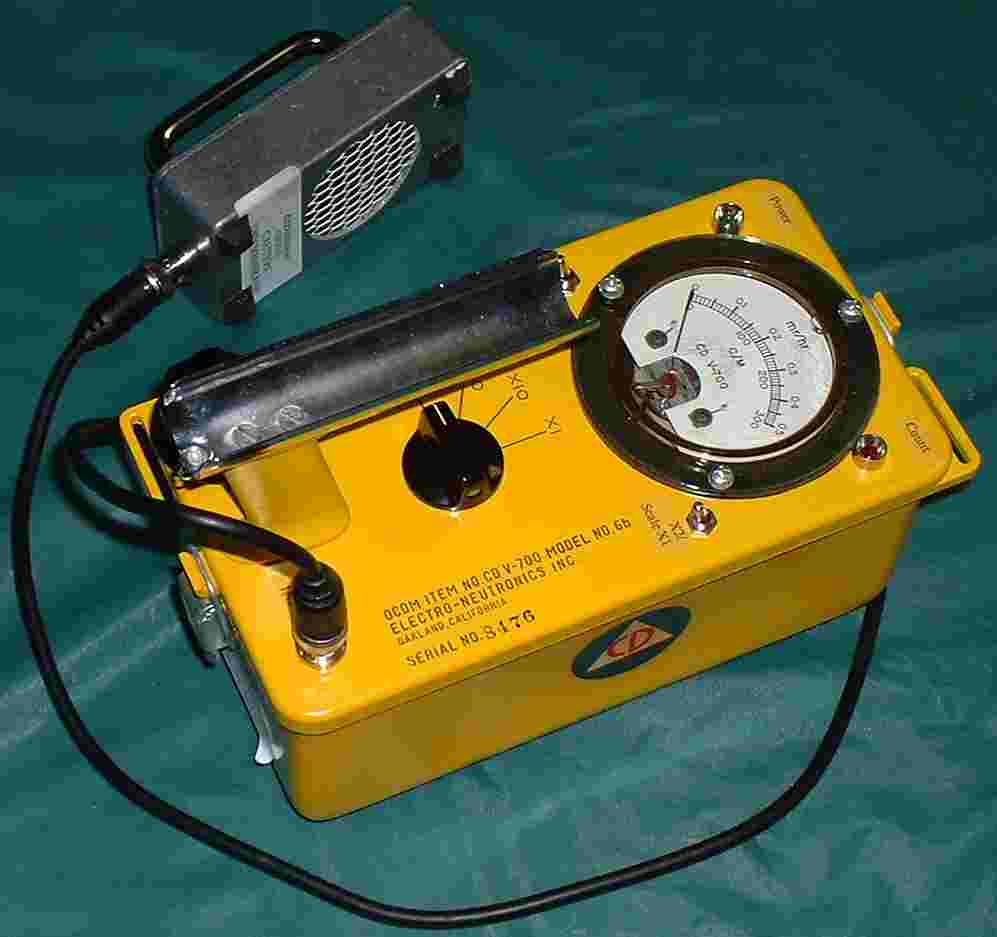 |
|
|
|
|
"Geiger
Counter" |
|
|
|
|
|
We
wanted something which can detect relatively low energy x-rays. We
settled on a CDV-700 "geiger counter" as modified by Geoelectronics,
and known as a "Leni". We also purchased a pancake type geiger-meuler
probe with a thin mica window from the same source. |
|
|
|
|
|
|
It
is capable of reacting to alpha, beta and gamma radiation, and does a
good job of detecting the low-energy x-ray radiation produced by a
fusor. We were happy with the standard of workmanship shown in the Leni
modifications, and had a good all-round experience in dealing with
Geoelectronics. Their sales are all done through eBay.
Unfortunately, more complex equipment is required to detect neutrons! |
|
|
|
NEUTRON DETECTION |
|
|
|
Bubble
Dosimeter |
|
|
|
The
bubble dosimeter, from Bubble Technology Industries, seemed to be the
ideal neutron detector. It is one of the few devices that reacts to
fast neutrons, and therefore requires no moderator. It can't be fooled
by gamma or other radiation. Unfortunately, the manufacturer has a $300
minumum order, so the amateur would have to buy 3 of the units. (And of
course that is before shipping.)
The one serious shortcoming of the Bubble Dosimeter is that there is no
immediate indication of the rate of production of neutrons. Rapid
changes in the rate of neutron production are not immediately apparent. |
|
|
|
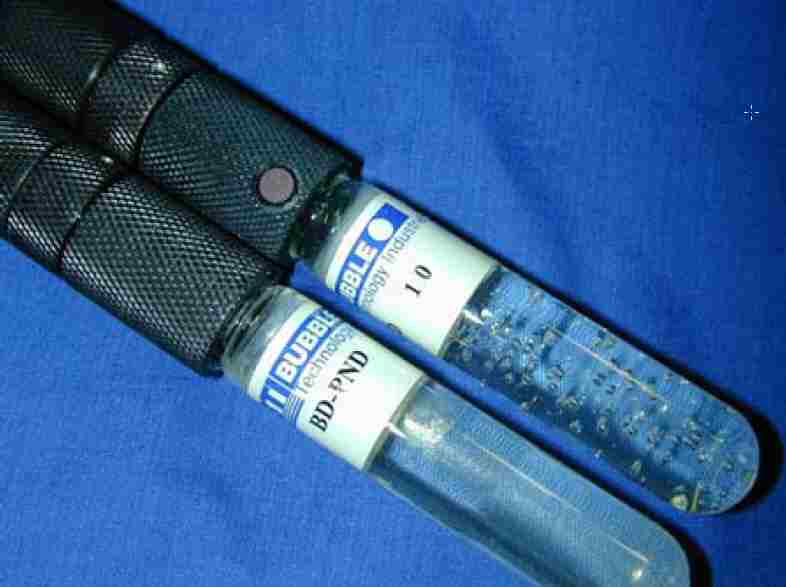 |
|
|
|
|
|
Bubble
Dosimeters from Bubble Technology Industries |
|
|
|
|
After
careful consideration, we initially decided against purchasing a bubble
dosimeter. |
|
|
|
Bubble
Dosimeter Update |
|
|
|
In
August, 2007, a group purchase made it possible to obtain a BTI PND 28
bubble neutron dosimeter at a reasonable cost. It was first used on
Sept. 14, 2007.
A picture of the results can be seen at Beyond the Demonstration Fusor. |
|
|
|
Helium
3 Detector |
|
|
|
 |
|
|
|
The
Helium 3 detector's main drawback is cost. These detectors are made by
several manufacturers, but the one which we obtained is a Reuter Stokes
unit, available at a very reasonable price (relatively speaking!) from
Don Orie, of Oetechnologies (oetech.com). It reacts only to very low
energy neutrons, therefore it must be used with several inches of a
moderator such as water or wax in order to detect the neutrons produced
by a fusor.
Its chief advantage over other detectors is its amazing sensitivity. It
requires an operating voltage of around 1700 volts, and a
charge-sensitive preamplifier to detect the very low amplitude pulse
caused by a neutron passing through the tube.
Below is a picture of the detector installed in its new paraffin
moderator. |
|
|
|
NEUTRON
MODERATOR |
|
|
|
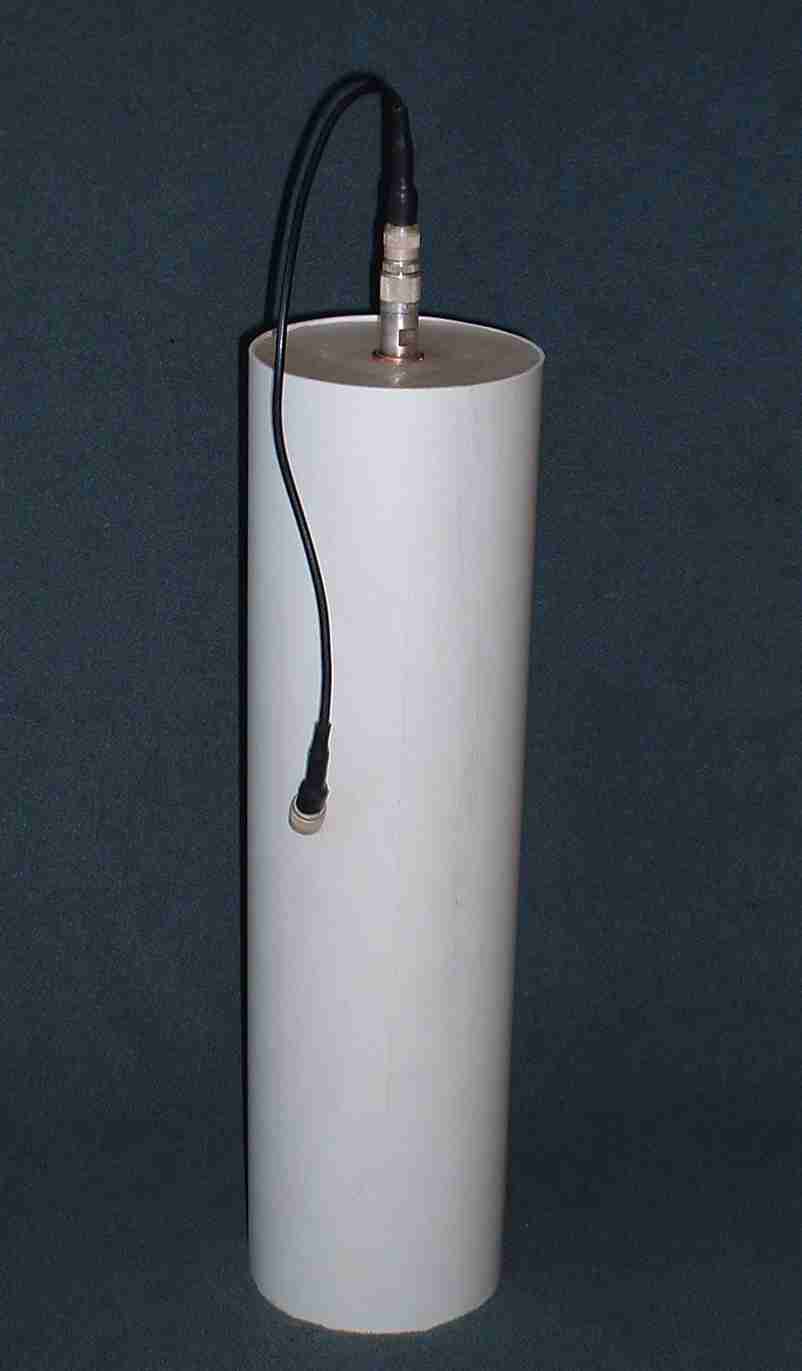 |
|
|
|
The
Completed Moderator shown
with the Helium 3 neutron detector installed. The moderator is made
from a 22 1/2 inch section of 6 inch diameter thin-wall PVC tubing. The
bottom was closed with a disk of 1/4 inch plywood, sealed with
Varathane and then epoxied into place. The center tube is 1 inch I.D.
copper.
Between the tubes is almost 20 pounds of paraffin wax.
For this application, the cable length shown may be
excessive. |
|
|
|
|
|
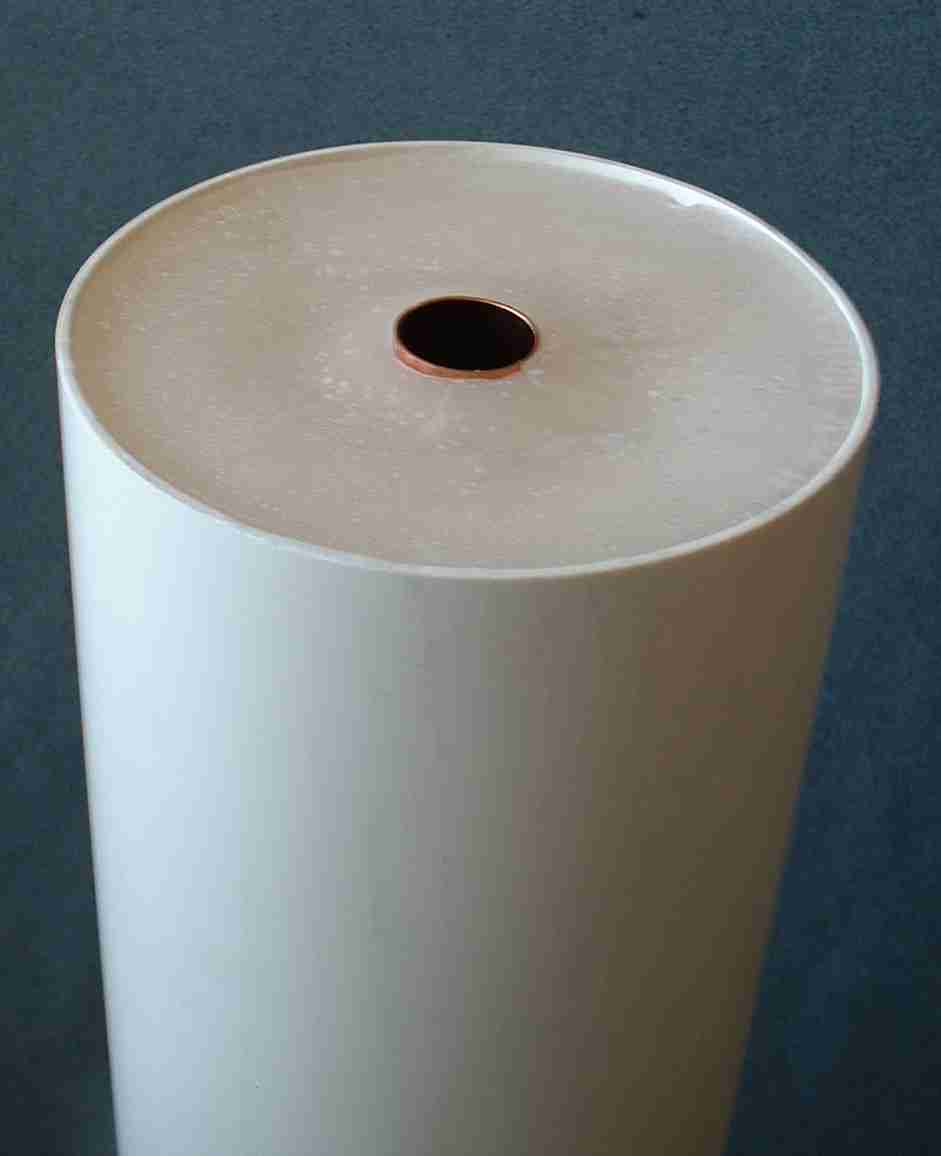 |
|
|
|
|
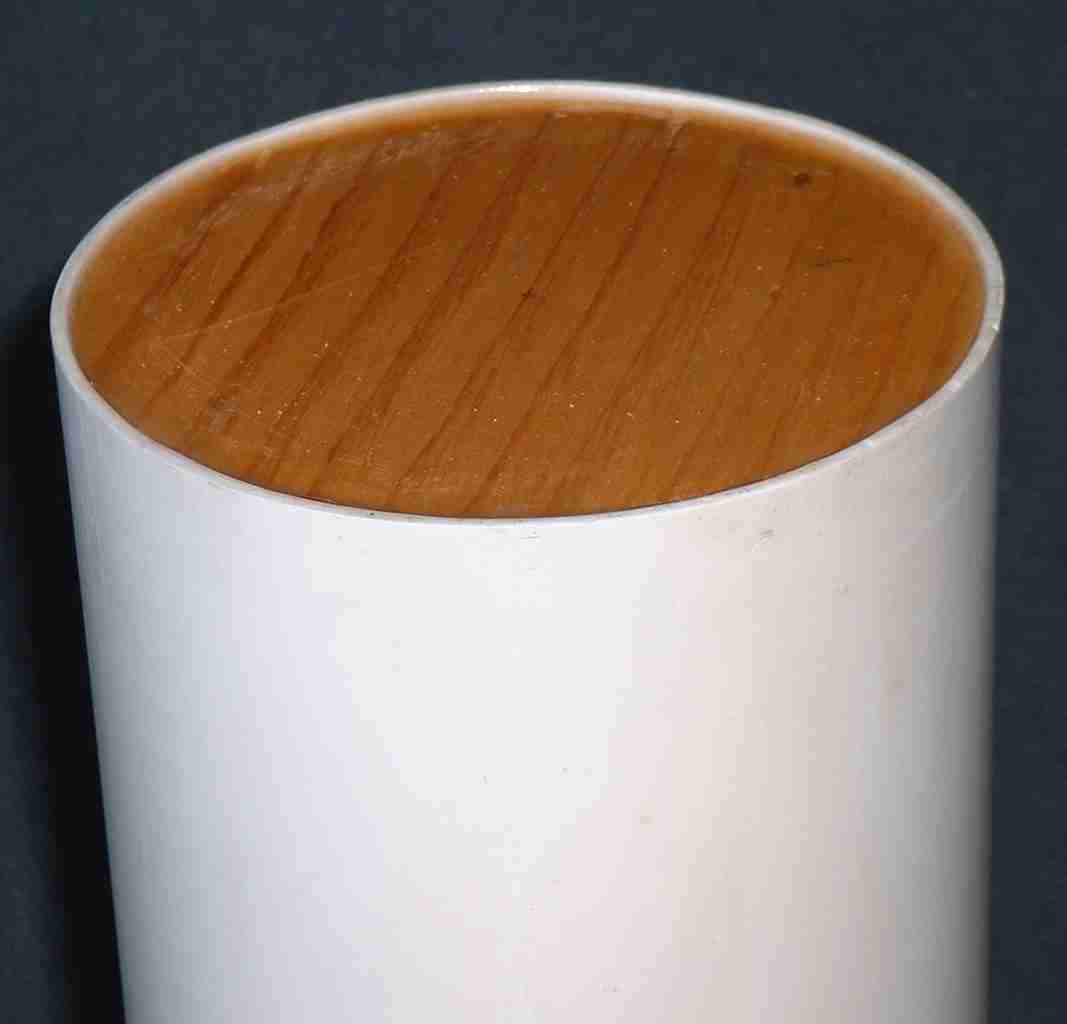 |
|
|
|
|
|
|
The
top of the moderator,
with copper inner tube and paraffin visible. The space between the
tubes was first filled with small chunks of solid paraffin, and then
melted paraffin was added in several consecutive pours. |
|
|
|
|
|
The
bottom of the moderator,
showing the sealed plywood disk epoxied into place |
|
|
|
|
|
Ludlum Model 2000 Scaler |
|
|
|
In
some ways a Helium 3 neutron detector tube is similar to the
geiger-meuler tube of a geiger counter. However, the pulse from the He3
tube is very short, and has a very small energy level. Therefore a
special type of preamp, called a charge-sensitive preamp has to be
used, before the normal amplifier and counting or rate-measuring
circuits. The pulse, in the millivolt range, has to be separated from
the 1200-2000 volt operating voltage which is normally applied by the
same device that contains the preamp, amp and counting circuits.
This is a tall order, and can be very expensive.
Fortunately eBay once again came through, when a Ludlum
model 2000 scaler
became available for a very reasonable price. A surplus unit, it still
bears the property tag from its earlier life with the U.S. Department
of Energy. It had been calibrated for use with a gamma detector, but
the voltage and the threshold are easy to re-adjust for the He3 tube.
Adjustment procedures can be found on the neutron detection forum at
fusor.net |
|
|
|
 |
|
|
|
 |
|
|
|
|
|
Property
tag is evidence of the Scaler's earlier
role in life, working for the U.S. Department of Energy |
|
|
|
|
|
Our
Ludlum Model 2000 Scaler |
|
|
|
PULSER |
|
|
|
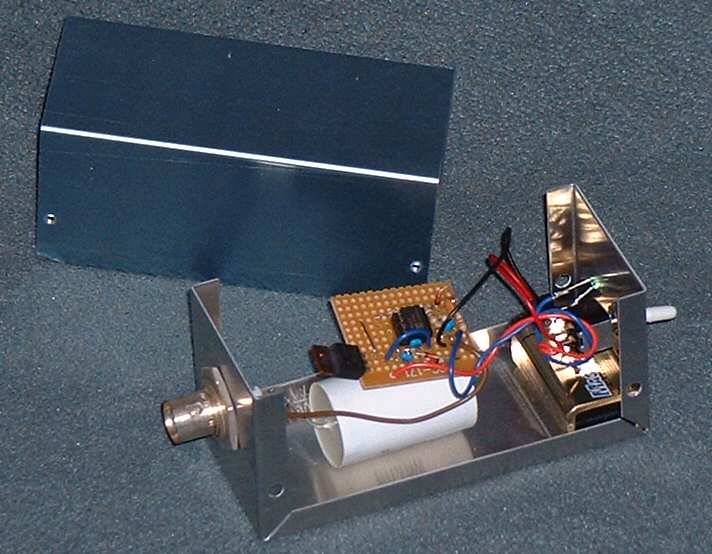 |
|
|
Right
A photograph of our homemade pulser
with the cover removed. It is used
as a source of test pulses for the Scaler.
The large capacitor is for DC blocking, as the scaler's input also
provides the operating voltage (up to 2000 volts) for the detector.
Even with the blocking capacitor, care must be taken not to connect or
disconnect the pulser with the Scaler turned on. |
|
|
|
|
|
|
PREPARING TO MEASURE HALF-LIFE
AFTER ACTIVATION of SILVER |
|
|
|
Once
the neutron output of the fusor is sufficiently high, the neutrons can
be slowed by a moderator, and then elements such as silver or indium
can be exposed to them. The result is that some of the atoms of the
exposed element will capture thermal neutrons and be changed to a
different isotope or element, usually one that is radioactive. The
identity of the element or isotope created can often be identified by
measuring its half-life. Isoptopes with very short half-lives (a matter
of minutes) lend themselves particularly well to this method. Silver is
a good example, and is the element that we have chosen for our first
attempt at activation.
In order to measure half-life, some method must be employed to
continuously record the radiation level of the activated sample over
time, so that its rate of decrease can be analyzed. This
usually means interfacing the radiation detection device (geiger
counter) to a computer which can continuously record the radiation
level. One of the least expensive ways of doing this is to utilize a
program sold by Black
Cat Systems,
after interfacing the geiger counter to the computer serial port.
BlacK Cat Systems provides a schematic for a very simple interface
which seems to work flawlessly, yet is easy to fabricate. Below is the
schematic and pictures of the device which we assembled using point to
point wiring on a prototype board. It seems to work perfectly. The
serial connector was soldered directly to the prototype board. A short
patch cable connects the miniature phone jack on the interface board to
the earphone jack of the geiger counter. |
|
|
|
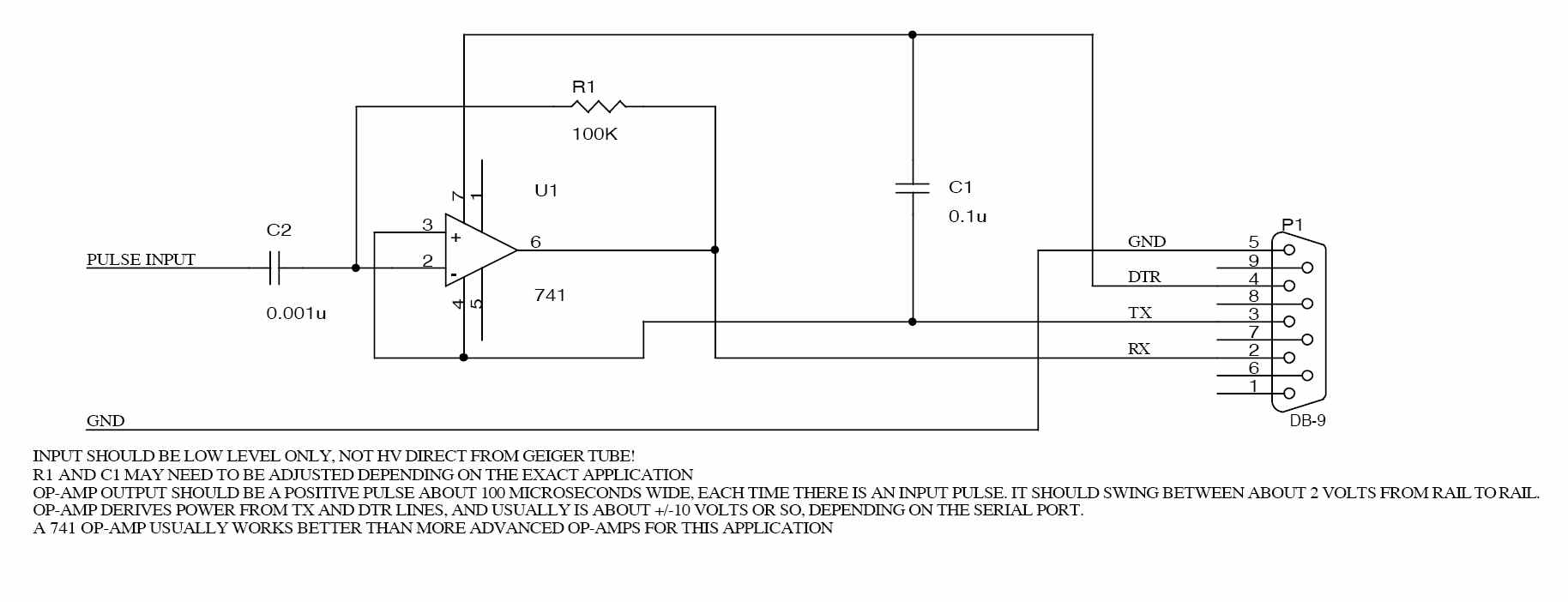 |
|
|
|
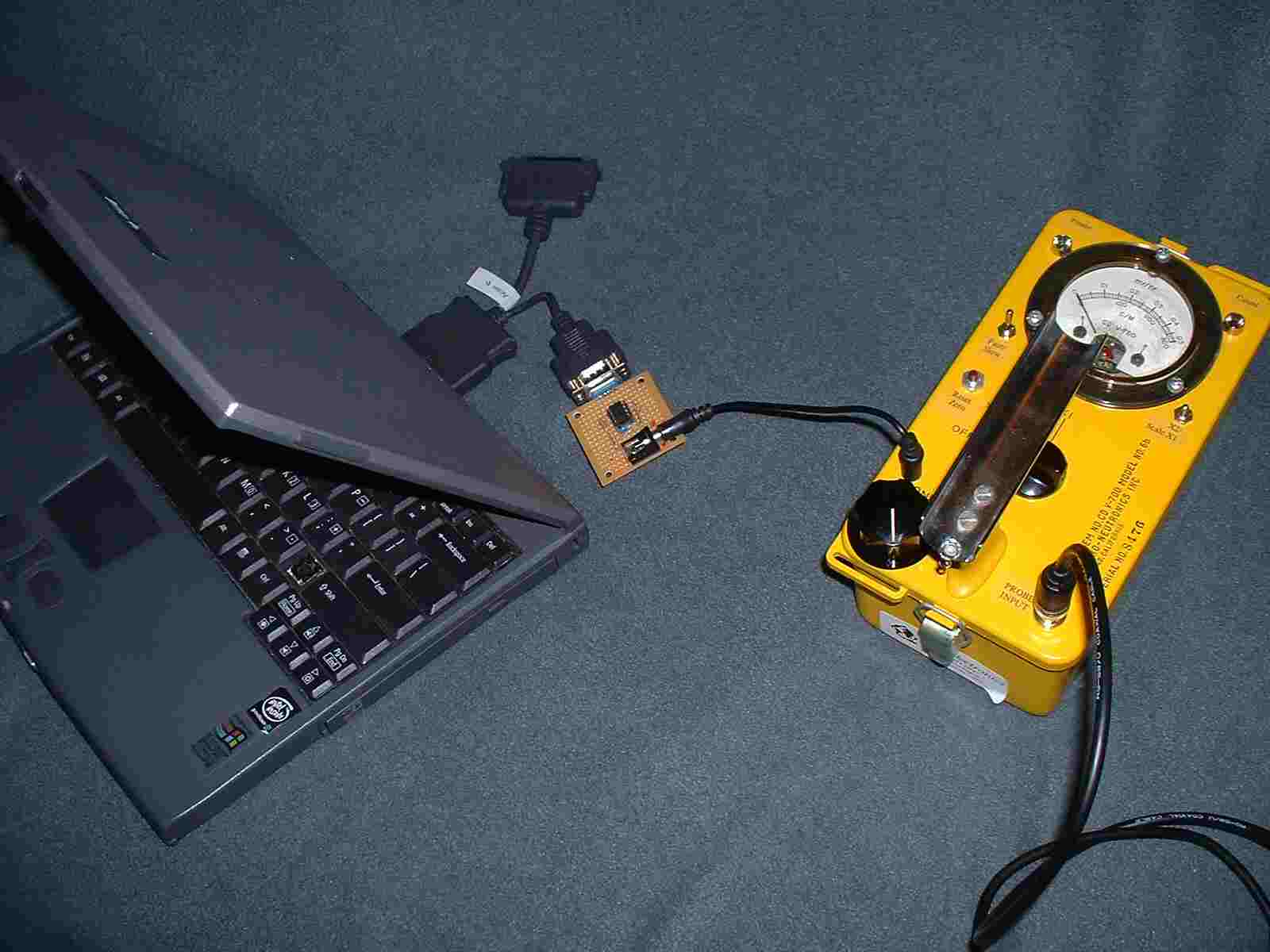 |
|
|
|
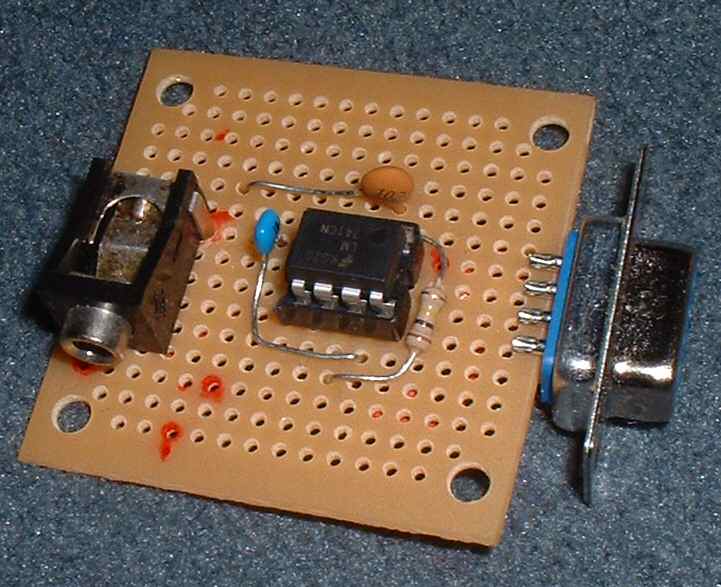 |
|
|
|
|
|
 |
|
|
|
|
|
(Above)
The completed interface circuit is
shown connecting the earphone output of our CDV-700 geiger counter to
the serial port of a laptop. The laptop can then record the pulses from
the geiger counter.
The data can subsequently be graphed or otherwise analysed to discover
the half-life of the material being measured.
The main radioisotopes detected
after neutron activation of silver are AG-110 (with a half-life of 24
seconds) and AG-108 (with a half-life of 2.37 minutes).
Both decay mostly by Beta decay, and little gamma radiation is emitted.
Fortunately our pancake detector is capable of detecting Beta as well
as Gamma. |
|
|
|
Above
Right are two views of the circuit,
point-to-point wired on a small prototyping board.
The serial connector is mounted by soldering the pins directly to the
pads on the board. |
|
|
|
|
|
Home
Page |
|
|
|
Equipment/Supplies Pg 5 |
|
|
|











